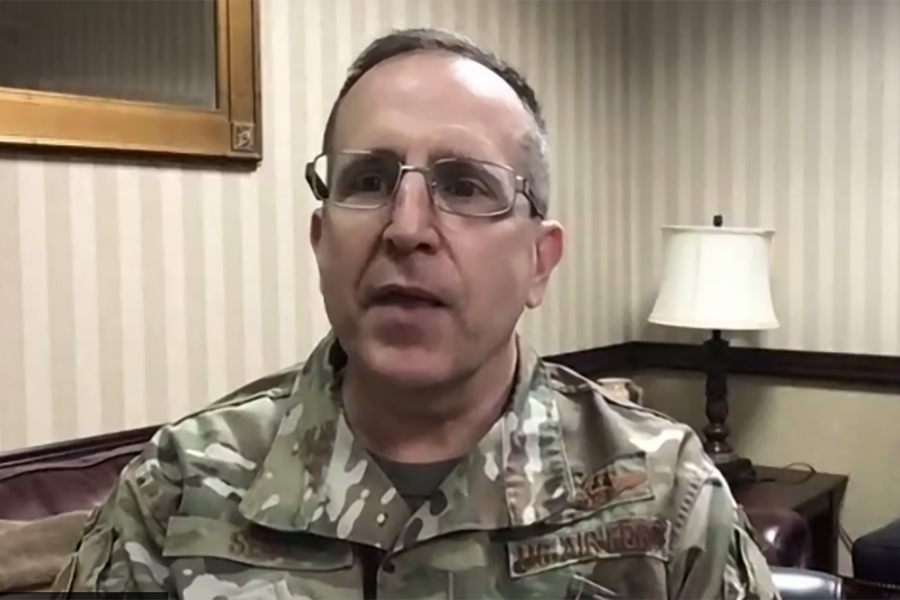Air Force Special Operations Command expects to conduct an armed overwatch flying demonstration “in the coming months” and U.S. Special Operations Command may make a procurement decision as early as 2022, AFSOC boss Lt. Gen. James C. “Jim” Slife said Feb. 16.
“I would like to be in procurement sometime in fiscal year ’22, and so I think we can do that at relatively low risk based on what we’ve seen from the vendors who have indicated that they intend to bring platforms to demonstrate for us in the coming months,” he said during a virtual “Aerospace Nation” event hosted by the Air Force Association’s Mitchell Institute for Aerospace Studies.
Although Congress used the fiscal 2021 National Defense Authorization Act to block SOCOM from buying armed overwatch aircraft this fiscal year, Slife said it still gave the command enough research, development, test, and evaluation funding to hold “a flying demonstration of commercially available platforms that might meet our requirements and inform our final requirement document before we go to a procurement decision.”
“That money is fully sufficient to do the demonstration program that SOCOM asked to do, and we anticipate going back for further conversation with Congress about that before initiating acquisition on the backside of a demonstration program that should take place here in the coming months,” he said.
According to Slife, SOCOM is considering a few commercial contenders, though he didn’t name-check specific airframes under consideration.
“If it is non-developmental, and it meets the requirements that SOCOM has laid out to industry, then we’re interested in looking at it,” he said.
However, he said SOCOM needs to see how the demonstrations turn out before it can determine “what an acquisition program would look like”—namely, whether it’d consist of one platform or a combination of platforms, or if the command might lease aircraft instead of buying them outright.
“We need to get through this demo to see what industry can produce at low risk in a short order,” he said.
Slife acknowledged some legislators’ reservations about how SOCOM envisions the proposed platform operating.
“I think Congress is appropriately and prudently exercising their oversight role,” he said. “I would view this as a lower-risk enterprise than perhaps some charged with oversight do, but the fact that we see it differently doesn’t mean that they’re wrong.”
The “surveillance strike methodology” SOCOM crafted to counter violent extremist organizations in the mid-2000s, which Slife called “very, very resource intensive” and involved stacking various types of aircraft, doesn’t make sense for future fights against violent extremists, both from a fiscal and operational perspective.
Instead, he said the command must “collapse the stack … into a smaller number of platforms.” Armed overwatch would answer this call by giving AFSOC “reconfigurable ISR capability” and the ability to provide close-air support while possessing “a very light logistics footprint in small, disaggregated teams … in very austere regions.”
Whatever armed overwatch platform is chosen could also be used to counter violent extremist organizations in Africa.
“What I would envision is a light footprint, a multi-role capability that has the ability to provide the intelligence needed to remain aware of the threat, and to take action where necessary, and has a kinetic capability to take action when necessary, without drawing a lot of attention to our host nations that may be hosting those operations,” he said. “That is what the future looks like in my mind, and so, you know, the armed overwatch platform would be ideally suited for that type of an operational environment.”
Slife said AFSOC expects to transition out the U-28 Draco aircraft in phases “as the armed overwatch platform comes online,” adding that the new aircraft will cost less to operate, have more versatility than its predecessor, and give the command “greater capacity to operate in those small, disaggregated kind of teams.”
“I think Congress is being prudent about this, but ultimately, I believe that SOCOM will be able to demonstrate to the Congress that this is a viable program, and it”s required for the future operating environment, so I remain cautiously optimistic,” he said.
Editor’s note: This story was updated at 9:14 a.m. Feb. 17 to correct the name of the U-28 Draco.
